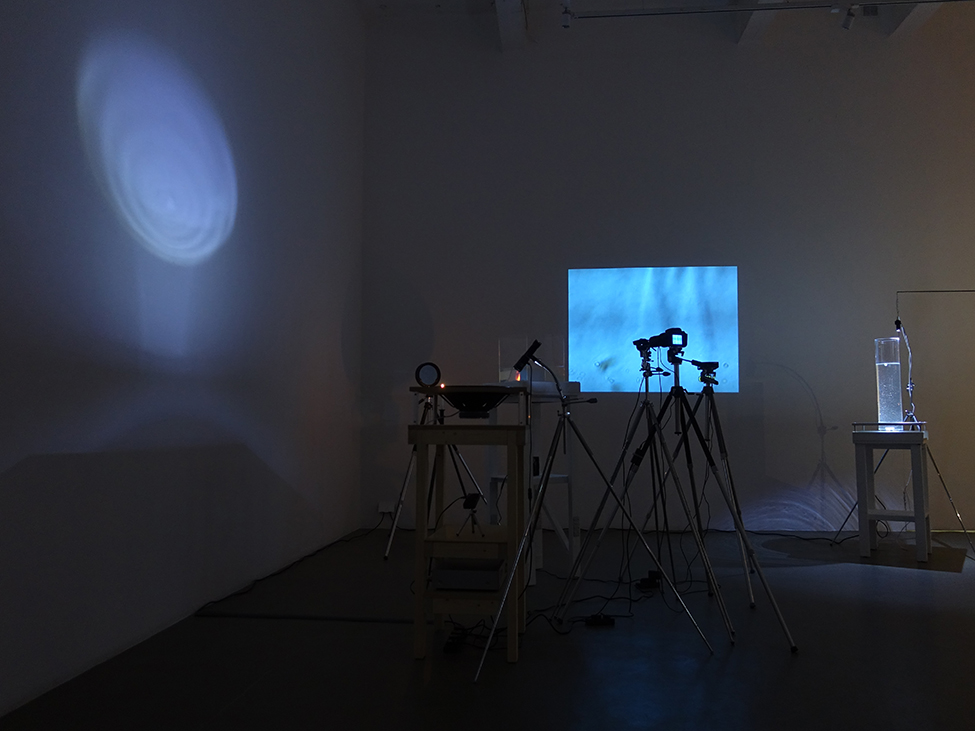 |
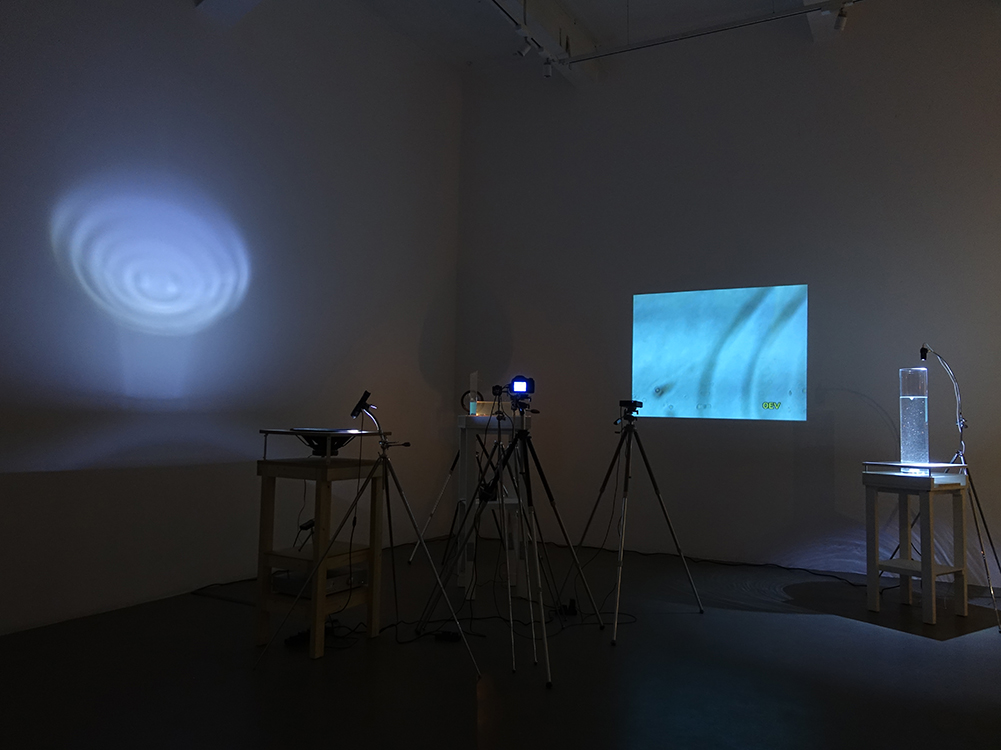 |
|
A Parallel Field of Experiments engages in analogue experiments as an alternative laboratory. It becomes an experiential investigation into aspects of black hole research through acoustic equivalence, invisible thermodynamic fluctuations across liminal boundaries and particle movements within rotating gravitational vortices. This work has been informed by observations and discussions at Gravity Lab led by Silke Weinfurtner, based at the University of Nottingham. The Gravity Lab team researches gravity simulators for black hole processes, developing novel experiments in relation to fluid and superfluid interfaces. Their hydrodynamic black hole simulator allows study of rotating black hole superradiance, ringdown and backreaction. Engaging with their research has led to investigating different systems using gravity, water and acoustic waves.
| |
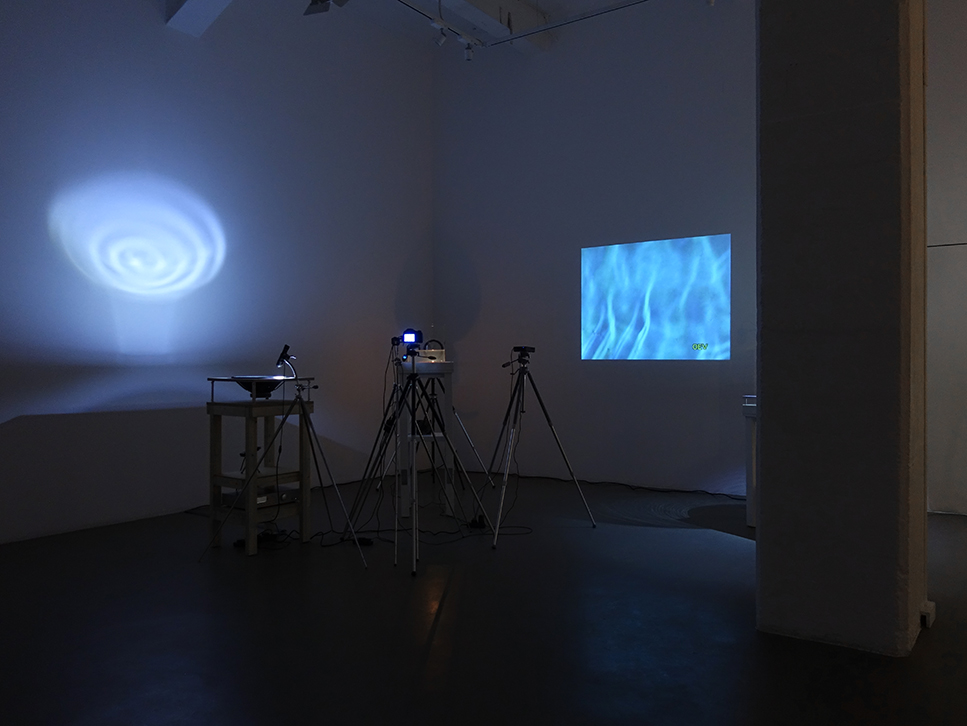 |
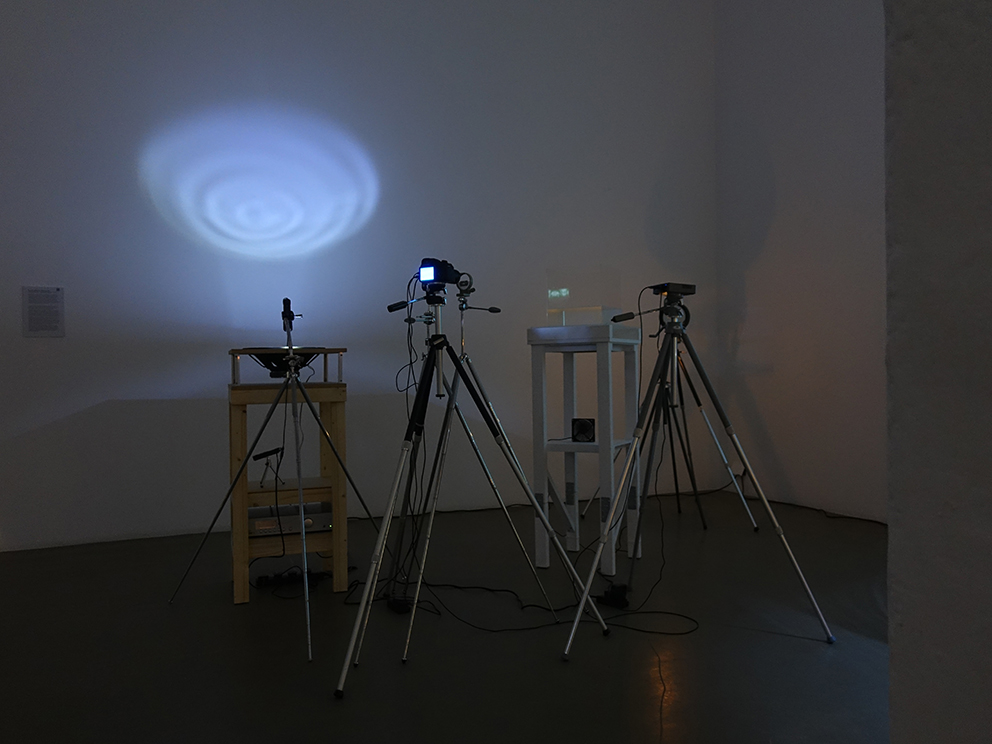 |
|
In response to Gravity Lab's analogue gravity experiments, sounds from black hole processes have been visualised as analogue acoustic equivalence (above). By amplifying a 15" subwoofer containing a petri dish of water, waves form in response to different sonic vibrations. The sounds being played through the subwoofer are pressure waves (equivalent to sound waves) from black hole processes at the centre of the Perseus Galaxy Cluster (Chandra X-ray observations, 2003). They are some of the lowest pitches found but have been scaled by 57 and 58 octaves above their true pitch, 144 and 288 quadrillion times their true frequency. The sound includes the actual waves as well as signals from large scale density fluctuations. The sonic ripples are then reflected onto the wall using a focused torch beam in an analogue visualization of acoustic equivalence. The initial intention was to play these sound waves through rotating vortices of water, seeking to cause ripple-effects around the event horizon: referencing the acoustic horizon in early analogue gravity experiments. However this was not realised in time for this particular exhibition.
| |
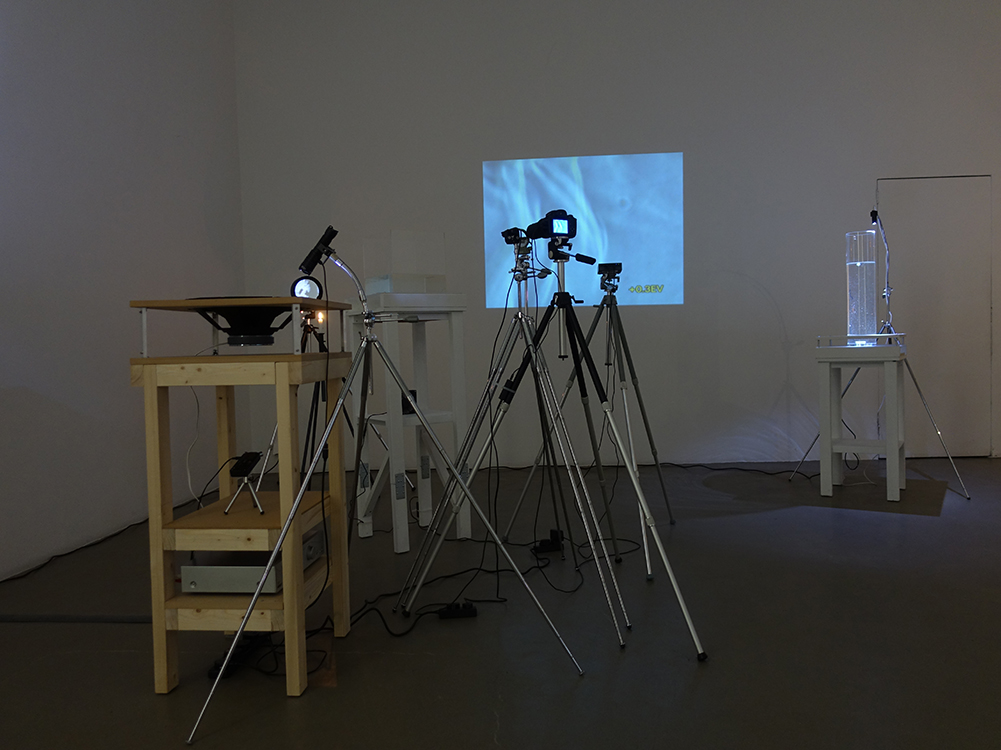 |
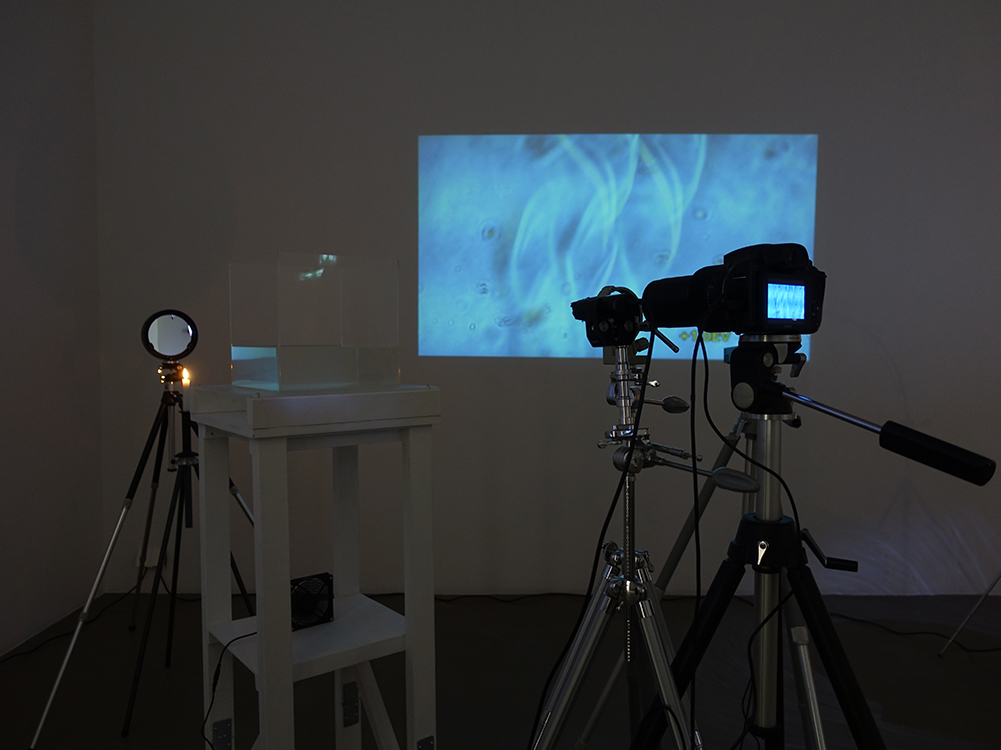 |
|
In another experiment, invisible density fluctuations have been visualized using a Schlieren process, initially discovered as early as 1665 by Robert Hooke. A narrowly focused beam of light reflects onto a primary telescope mirror and then back across a razor blade that partially blocks the light coming into the camera. This causes the different thermodynamic densities in air or water that are normally invisible to become visible, for example the heat currents above a candle flame shown here. The expanded nature of early analogue Schlieren methods become a diagram of how invisible currents are visualized, extending across the space on a collection of 1950s camera tripods. The initial intention was to visualise different densities of water within vortices using Schlieren processes, to show invsible rotating thermodynamic currents near the event horizon. However this needs further experimentation to work succesfully.
| |
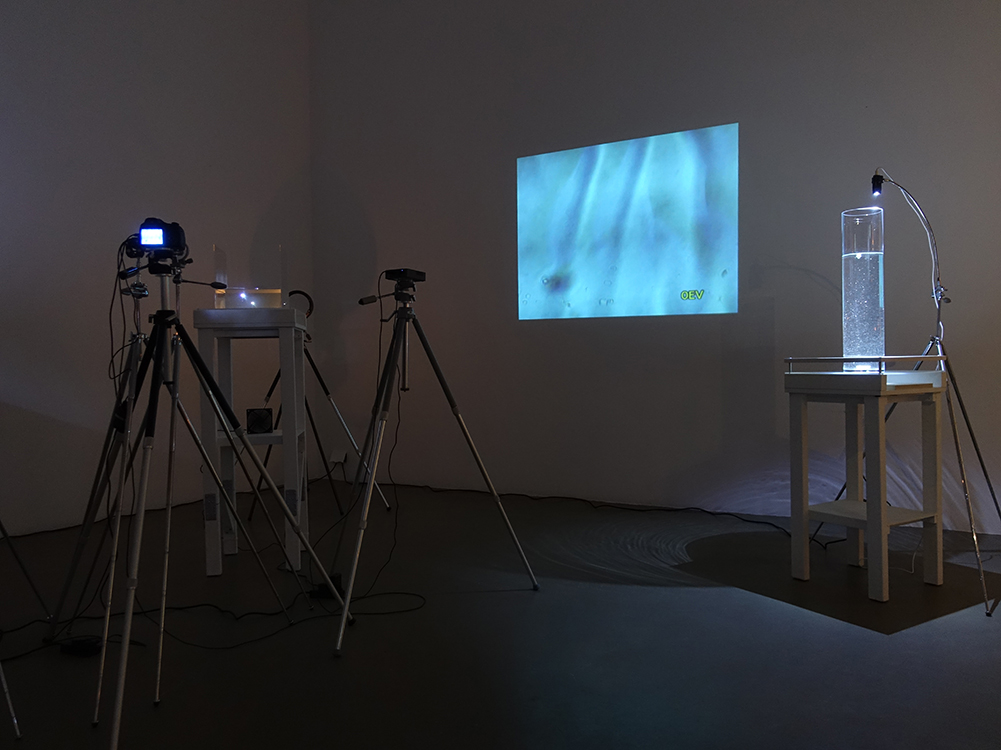 |
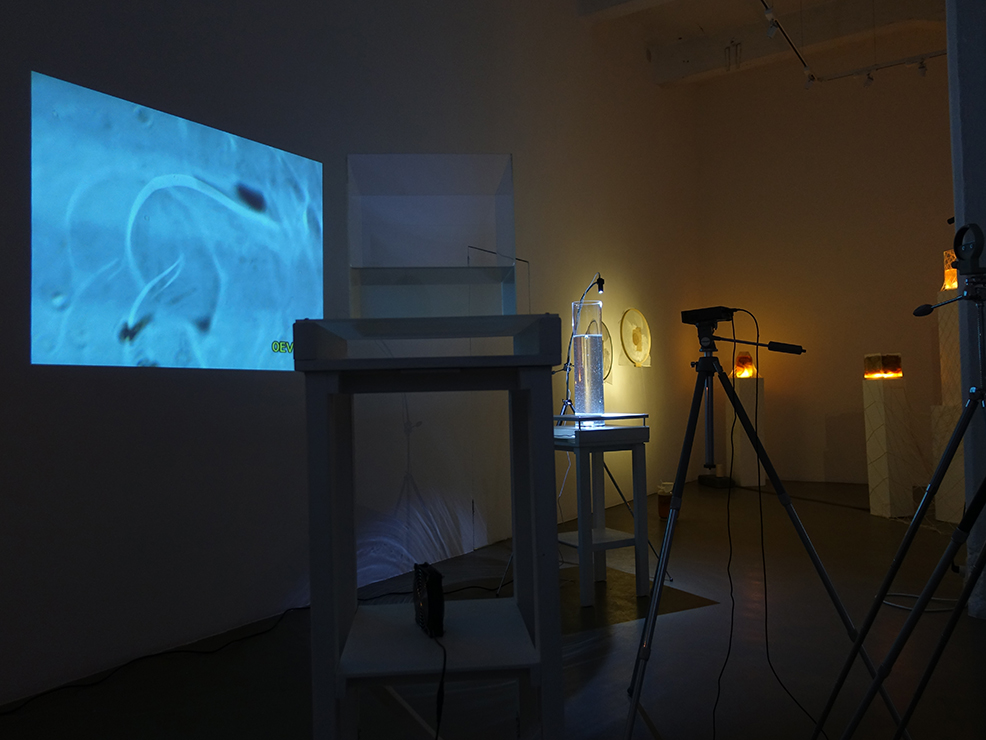 |
|
The third experiment involves a rotating cylinder that references stars orbiting the supermassive black hole that lies at the galactic centre of the Milky Way, Sagittarius A. Here fine particles of mica are reflected by torch light while rotating in a gravitational vortex. This also references Sherrie Mason's research that 'a single bottle of water can hold galaxies of microscopic plastic particles' (ORB Media, 2017). Using Galaxy Count software, Mason found that 98% of Nestle Pure Life bottled water contained 930 microplastic particles per litre.
All photos by Nicola Rae |
|
|
|
|
|
|
|
|
|
|
|
|
|
|
|
|